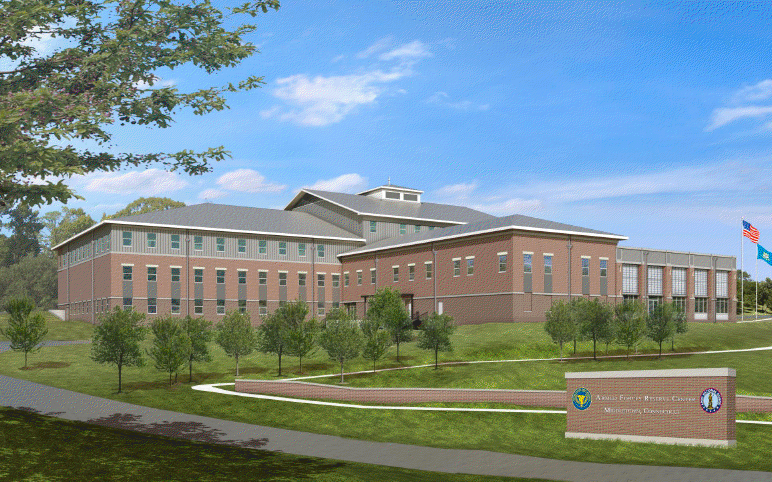KBE Building Corporation (KBE) (www.kbebuilding.com) earned a First Place Award for the Armed Forces Reserve Center (AFRC) at the 2012 Connecticut Building Congress (CBC) 16th Annual Project Team Awards Banquet in the category of Best New Project over $10 million.
The $54 million, 203,000-sf AFRC facility in Middletown, Connecticut encompasses a state-of-the-art training center, a vehicle maintenance facility, and a field equipment storage facility for the Connecticut National Guard and Army Reserve. KBE Building Corporation was the Design-Builder for the project in a joint venture with DeRita Construction Company, with Kleinfelder as the Architect of Record. The construction phase was completed in just 16 months, a remarkable achievement given the scope of work, which included the removal of nearly 500,000 cubic yards of soil and rock from the site. The new Reserve Center features numerous “green” building measures, including a “green” roof, photovoltaic arrays, and high-efficiency heating and cooling systems.
Previously, the Armed Forces Reserve Center project won Best in Show from Connecticut’s Associated Builders and Contractors, Inc., as well as the 2012 Engineering Excellence Grand Award from the American Council of Engineering Companies. +
Related Stories
| Sep 16, 2010
Gehry’s Santa Monica Place gets a wave of changes
Omniplan, in association with Jerde Partnership, created an updated design for Santa Monica Place, a shopping mall designed by Frank Gehry in 1980.
| Sep 16, 2010
Green recreation/wellness center targets physical, environmental health
The 151,000-sf recreation and wellness center at California State University’s Sacramento campus, called the WELL (for “wellness, education, leisure, lifestyle”), has a fitness center, café, indoor track, gymnasium, racquetball courts, educational and counseling space, the largest rock climbing wall in the CSU system.
| Sep 13, 2010
Community college police, parking structure targets LEED Platinum
The San Diego Community College District's $1.555 billion construction program continues with groundbreaking for a 6,000-sf police substation and an 828-space, four-story parking structure at San Diego Miramar College.
| Sep 13, 2010
Campus housing fosters community connection
A 600,000-sf complex on the University of Washington's Seattle campus will include four residence halls for 1,650 students and a 100-seat cafe, 8,000-sf grocery store, and conference center with 200-seat auditorium for both student and community use.
| Sep 13, 2010
Second Time Around
A Building Team preserves the historic facade of a Broadway theater en route to creating the first green playhouse on the Great White Way.
| Sep 13, 2010
Palos Community Hospital plans upgrades, expansion
A laboratory, pharmacy, critical care unit, perioperative services, and 192 new patient beds are part of Palos (Ill.) Community Hospital's 617,500-sf expansion and renovation.
| Sep 13, 2010
China's largest single-phase hospital planned for Shanghai
RTKL's Los Angles office is designing the Shanghai Changzheng New Pudong Hospital, which will be the largest new hospital built in China in a single phase.
| Sep 13, 2010
Richmond living/learning complex targets LEED Silver
The 162,000-sf living/learning complex includes a residence hall with 122 units for 459 students with a study center on the ground level and communal and study spaces on each of the residential levels. The project is targeting LEED Silver.















